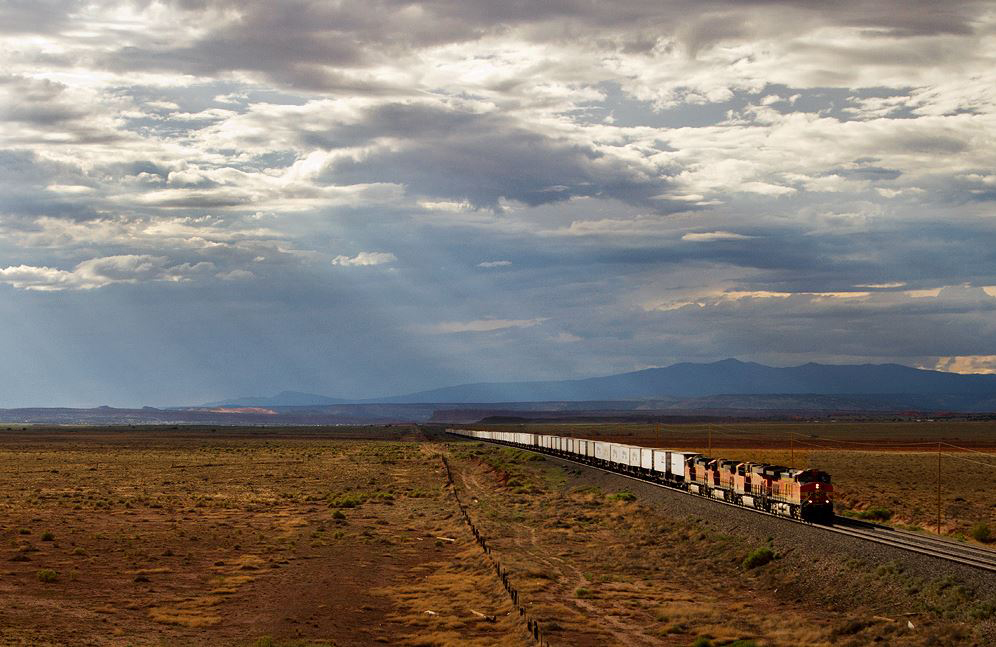
CHICAGO — Class I railroads’ focus on efficiency and simplifying service is making trailer-on-flatcar service obsolete. Despite strong e-commerce demand and a persistent shortage of truck drivers and chassis, intermodal trailer traffic has continued to decline. So far this year, the four major Class I railroads have hauled nearly 160,000 fewer trailers, down 20% year over year.
It’s the evolution of a transformation led by railroads to streamline intermodal operations and replace trailers with 53-foot containers. At the current pace, TOFC service could be largely obsolete in the next few years, as predicted by intermodal analyst Larry Gross in July 2021 [see: “Anaylsis: Are trailers reaching the end …,” Trains News Wire, July 1, 2021].
Gross reiterates railroads’ focus on two types of intermodal service, domestic and international, weaning out trailers as a third option. Trailers are disadvantaged because they occupy more capacity per foot of train compared to a double-stack container train of the same length. Trailers also require separate lifting equipment and use a declining fleet of TTX spine cars.
Trailers are still preferred in some markets. Temperature-controlled shippers like trailers, as 53-foot containers have inferior loading characteristics, according to Gross. Parcel shippers, such as FedEx or UPS, who use 28-foot pup trailers, will also need to be incentivized to convert to 53-foot containers, as two 28-foot trailers allow 56 feet of freight, and the pup trailers provide smaller direct-to-destination loads that do not require intermediate sorting. This is a major savings for parcel companies.
Gross states a lack of chassis is also like a perpetual thorn in the side for railroads, as trailers serve niche opportunities where chassis are in short supply. However, railroads’ long-game focus on operational simplicity could ultimately trump the case for maintaining piggyback service.
Gross reiterates what he first stated last year: the rate differential between containers and trailers continues to widen, and shippers are facing a decision whether to convert trailer business to the highway or invest in container operations. Discontinuing certain service lanes is accelerating the decision making as shippers find themselves with fewer options.
TOFC business isn’t likely to disappear overnight, but Gross says that if trailer volumes continue its downward trend at these numbers, the industry will get to its end game pretty quickly.






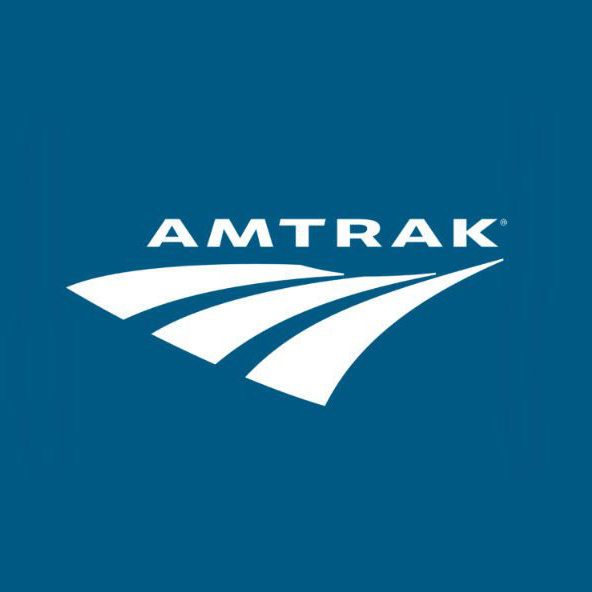
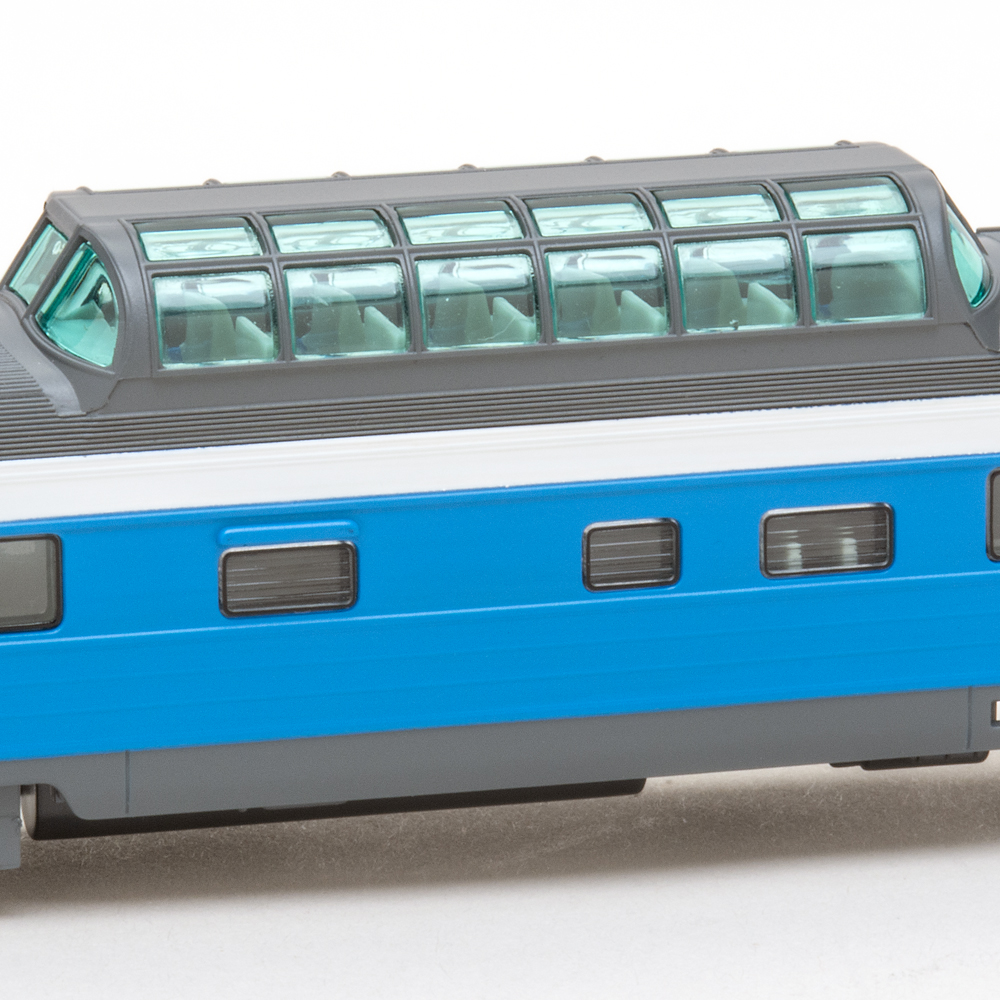
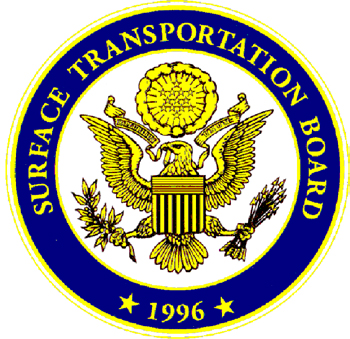
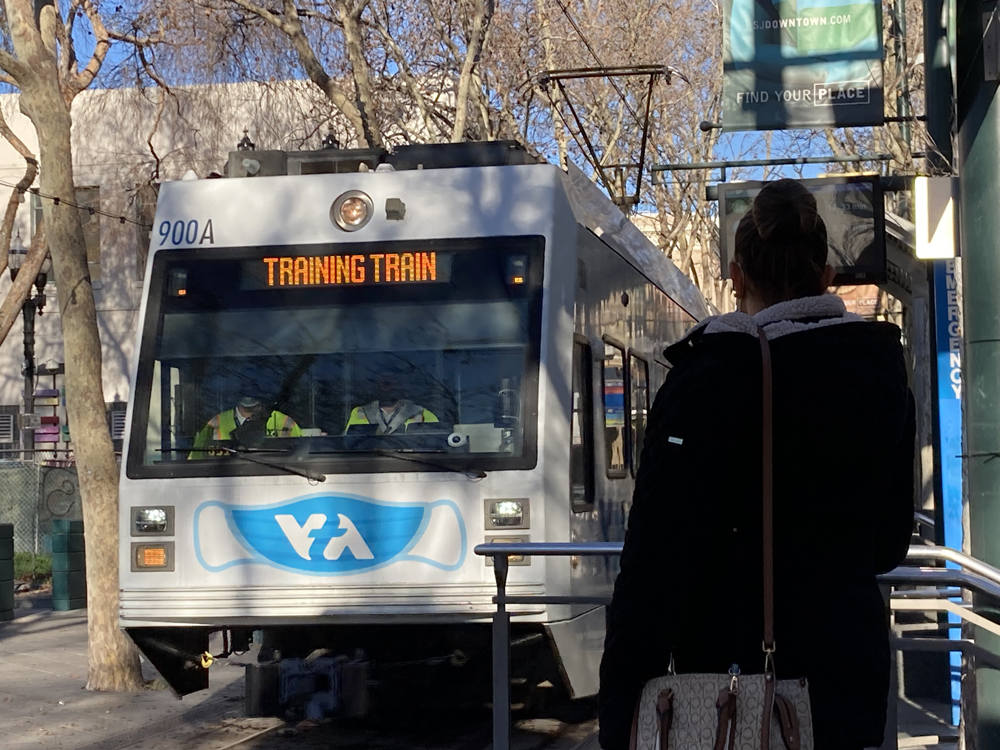




Containers still need to be put on a truck to deliver to the customer, so the argument that ther are not enough truck drivers seems kind of lame. All this will do is shift more traffic away from the railroads.
The thing about 53′ temperature controlled containers. If the railroads would provide space of power for an external power connection, half the unit could be left behind.
Temperature controlled loads need extra attention. Whether the railroads or the trucking company they need to be tended to. It is not hard just use your head. Most units have an external data link, usually satelite, sometimes cellular data. The data link means the cargo can be monitored enroute.
If railroads would provide decent customer service, the railroads could capture a lot of temperature control loads. A fair amount of temperature control loads are more then conductuive to car load traffic as opposed to truck load. Go look at the majority of Americold cold storage facilities and you will see rail docks. Same for others.
TOFC won’t go completely away. Some routes still have yet to have clearances increased. And many well cars have fifth wheels at each end. How many intermodal trains do we see with blocks of empty cars. Maybe somewhere in the future TOFC will become a low cost space A service that fills those empty wells.
Mr. Atkinson (and the rest of you nitwits) might want to go back and re-read the December 2012 issue of TRAINS Magazine about operations at some place called Willow Springs. There is a reason why the UPS CACH is only a few hundred feet from the tracks of the BNSF intermodal terminal. BTW, North Bay, CA looks the same way. And if you looked very carefully at the white unmarked 53ft containers on BNSF stack trains these days you would see in the upper left- or right-hand corner the UPS reporting marks. Most trains I see have about a 50-50 mix of UPS containers and trailers. And just about every BNSF intermodal train out here now has FedEx containers in addition to the FedEx trailers. (Both are prominently marked.)
I loved that article of Willow Springs! No room to grow however. So some impressively smart innovations were implemented. I didn’t quite get the full gist of it.
I’m going to read the online version of the July 1998 article you mentioned. While I’m not a nitwit or idiot, I don’t pretend to know everything. I wasn’t even born by the time your ’98 article came out lol. I look forward to it!
Whomever the unlucky employee is that tells UPS and FEDEX to take their trailers elsewhere will likely be unemployed after the respective presidents talk with each other.
Only an idiot would tell their biggest CUSTOMER they don’t want their business!
As a former CSR ISR for 7 years, I saw first hand UPS acquire a bunch of containers, and a couple years later, acquire new trailers. Why? Reliability. UPS drivers thoroughly examine every trailer before and after they hook on and note any defects. If anything needs to be repaired, they get it done on the spot. When UPS claims ‘the tighest ship in the shipping business’, they LIVE it!
Putting UPS containers on ‘pool’ chassis poses a variety of problems. First and foremost, chassis availability. Sometimes we were buried in chassis, other times, inbound loads waited several hours or more for an available chassis to be put under them.
Throw in that in the interest of ‘efficiency’, there’s no ingate physcial inspection by any human. It’s a trip through the camera ‘tunnel’ and that’s it. So, any problems such as bald or flat tires, burnt out lights, etc, don’t become apparent until an unlucky driver checks their load and has to wait valuable minutes and hours before said load and chassis can be safely taken out the gate. Chassis swaps were/are rare when I was there.
And what about problems found at the UPS terminal? I had a UPS container come in one time with a complete temporary air brake line from front to rear because of a leaking line in the chassis. UPS does not have the necessary parts to repair the chassis. So, they jury-rigged a line and screwed it to the sides of the container to get it out the door in time to make the cutoff for the train to Chicago! It got sent with chassis as the brake hose line connected box and chassis together.
In short, UPS has 100% control of maintenance and repairs for their trailers and containers. But pool chassis? My guess is Schneider had similar bad experiences with pool chassis and purchased their own dedicated fleet of chassis for their containers.
One more thing for Mr. Atkinson (who appears to be the idiot here). While I was not personally in the room when this discussion probably occurred, based on my experience I suspect that when UPS found out they could get a better rate using a domestic container versus an intermodal trailer they probably did what most rational shoppers do; they chose the lower price (in the container).
Mr. Giblin, is it necessary to call fellow Trains subscribers who post thoughts on this thread idiots and nitwits?
Railroads are in business to serve customers that will pay the fully allocated cost of the service and leave something for the shareholders.
Generating revenues is not difficult. Getting enough revenue to cover the cost of the service is the trick.
Unless you have access to the carrier’s books, how could you know whether the cost of TOFC or any other rail service is being covered by the rates?
Mr. Smith is a very smart man. What we told our intermodal customers in 1990 was that if they needed a lower rate or a more competitive price (versus truck), we would offer it only in domestic containers where the costs were lower. I would submit the intermodal marketplace made the container conversion possible (and profitable). And for those of you with short memories Santa Fe ran a lot of short to medium lanes in the 1980’s and ended up with an operating ratio well over 90. Plenty of volume and damn little profit to show for it!!!
Whenever I stay at the Bridgeview, I see lots of long strings of trailers attached to long strings of containers on NS trains crossing the bridge.
Two problems with Gross statements…one is that Canadian carriers operate a fleet of 53′ refrigerated containers just fine…of course they’re also allowed to load them to 90,000 lbs during half the year. Second, there’s actually nothing wrong with loading a 53′ container with two different destinations, it’s done all the time with foodstuffs. Also, Fed-Ex already has a supply of their own containers, they’d just need to buy more, and UPS would have to start acquiring them, though they must have some already if they operate on BNSF as the BNSF is not a party to any container pools and no longer have their own equipment, it’s all shipper owned.
I don’t think Fed-Ex or UPS is going to like this idea. Does this mean that they will have to load 53 ft containers half full so they don’t have two destinations in one. So that would double the amount of containers that they need that we don’t have the trailers to move them with. Will Fed-Ex an UPS have to buy the containers like they own there own trailers. Or railroad charge them for containers plus the lift plus the move ?
In addition to agreeing with the above comments, I also recall the predictions of the demise of the boxcar over the years. You still see them being used and I want to say that an order for new boxcars was placed recently. TOFC isn’t going away any time soon.
So, are the Class 1’s giving up on the mid-range hauling of intermodal? Appears the big outfits are not willing to grow revenue, just cut expenses. Every other form of business in a capitalistic society strives for increased revenue, but the Class 1’s, forget it. Sooner or later, lack of sales growth negatively affects profits. How can a huge business enterprise stay successful without revenue growth? You can’t cut your way to long term success. When are these empty-suit CEO’S going to learn that sales growth leads to more profits? These clowns couldn’t work for Walmart, Amazon, or the local hardware store and the grocery down the street. Big rail is becoming its’ own enemy.
Mr. Guthals you appear to be the clown here!!! I can tell you from personal experience that domestic containers are inherently more profitable than intermodal trailers. They are also inherently more environmentally friendly. All of you nitwits should go back and read my July 1998 TRAINS article on intermodal. Finally, if you open your eyes and look around you will see we are rapidly running out of space at most urban intermodal terminals. Terminals like Corwith and Willow Springs are landlocked and if we do not go up, we are going to run out of room sooner rather than later. Will County is now full up as well.
Penny wise, pound foollish. Another example of railroads insisting that they and not their customers determine the service provided. They have forgotten that they are there to serve their customers, not vice-versa.